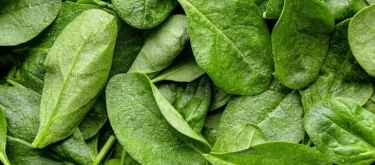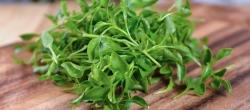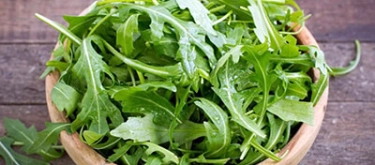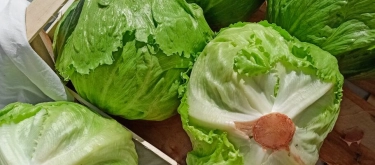Warrigal Greens: Taste Profile, Aroma, Benefits and Health Risks
Warrigal greens (Tetragonia tetragonioides), also known as New Zealand spinach or native spinach, is a hardy leafy green native to Australia and New Zealand. It was used traditionally by Indigenous Australians and gained attention from early European settlers as a spinach substitute in coastal diets.
Generally safe when cooked; should not be consumed raw in large amounts due to oxalate content.
What does Warrigal Greens taste like?
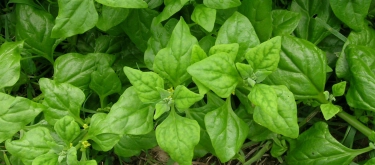
Complete Sensory Description:
-
Taste: Mild and slightly salty, with a subtle earthy flavor; when cooked, it becomes tender and spinach-like with a hint of minerality.
-
Aroma: Fresh, green, and slightly briny, similar to coastal herbs.
-
Texture: Slightly fleshy and succulent leaves, which become silky and soft after cooking.
-
Appearance: Triangular to spear-shaped leaves with a vibrant green color and slightly waxy surface; trailing vine growth.
In-depth Flavor Analysis:
The flavor of warrigal greens comes from mineral-rich soils and a natural saltiness due to its coastal habitat. It contains oxalates, which contribute a slight bitterness and astringency in raw form. Cooking neutralizes most of these compounds and brings out its mild, spinach-like character. Its flavor is robust enough to stand up in stir-fries but subtle enough to blend well in egg-based dishes, pastries, and creamy sauces.
Flavour Variations Depending on Preparation and Maturity:
-
Maturity: Younger leaves are more tender and mild, while older leaves may become more fibrous and slightly bitter.
-
Preparation:
-
Blanched or sautéed: Reduces oxalates, enhances tenderness, and reveals its mild savory flavor.
-
Raw: Can be used sparingly in salads but should always be washed and balanced with acidic or dairy-based dressings.
-
Baked or creamed: Absorbs flavors well and works excellently in pies and gratins.
-
Varieties and Culinary Applications:
While there are no formally named culinary varieties, plants grown in coastal soils tend to have a saltier, more mineral-driven flavor. Commonly used as a substitute for spinach, warrigal greens are excellent in quiches, soups, curries, stir-fries, and omelettes. They pair well with garlic, cream, lemon, cheese, and nutmeg.
Selection and Storage:
Harvest young, healthy leaves that are vibrant green and free from blemishes. Store refrigerated in a sealed container or bag for up to a week. Always wash thoroughly and blanch before freezing or consuming in large quantities.

Nutritional Insights:
Warrigal greens are rich in vitamin C, beta-carotene, antioxidants, fiber, and minerals like magnesium and iron. Cooking enhances its digestibility and safety while retaining most nutritional benefits. Regular consumption may support immunity, reduce inflammation, and contribute to iron intake in plant-based diets.
Expert Insights & Culinary Tips:
Chefs recommend blanching the leaves for 1–2 minutes to remove oxalates before further cooking. They are an excellent ingredient for adding bulk and nutrition to savory pastries, pasta dishes, or mixed vegetable sautés. Best used with strong or creamy flavors to enhance complexity.
Interesting and Curious Facts:
-
Collected and cooked by Captain Cook’s crew to prevent scurvy during Pacific voyages.
-
A rare native Australian leafy green that is both edible and commercially cultivated.
-
Grows well in coastal gardens and saline soils, making it ideal for permaculture.
Harm and Dietary Considerations:
Contains oxalates, which may contribute to kidney stones if consumed raw and in large amounts. Cooking removes most of these compounds. Not recommended for infants or toddlers under 3 years due to potential sensitivity to oxalates and digestibility concerns. Individuals with kidney issues should consult a doctor before regular consumption.
Religious Dietary Considerations:
Warrigal greens are plant-based and accepted in all major religious dietary systems.
Final Thoughts & Sensory Journey:
Warrigal greens offer a native twist on spinach with a coastal complexity that transforms simple dishes into something distinctly Australian. When prepared properly, they provide both flavor and nutrition with rich cultural roots.
Resources:
-
"Edible Wild Plants: Wild Foods from Dirt to Plate" by John Kallas (2010)
-
"Australian Native Food Plants" by Tim Low (2002)
-
"Bushfood: A Culinary Journey Through Australian Native Foods" by Jennifer Isaacs (2017)
